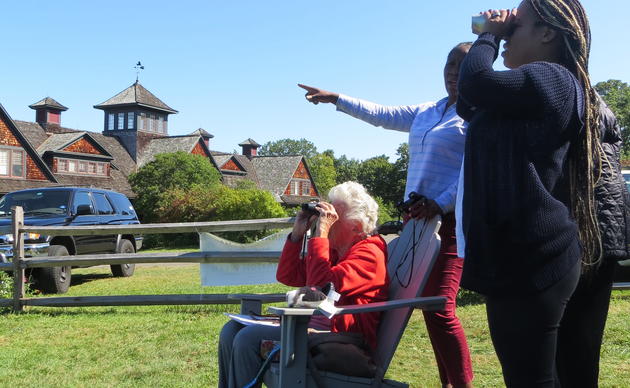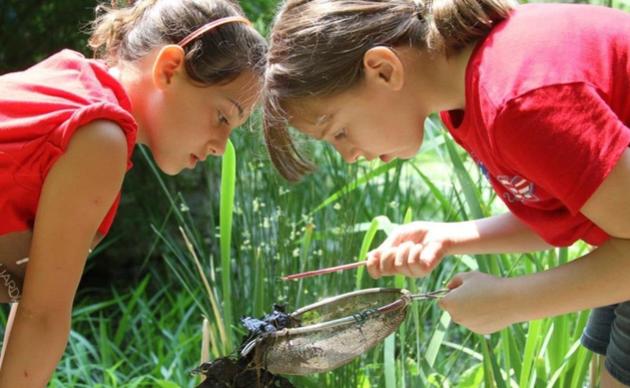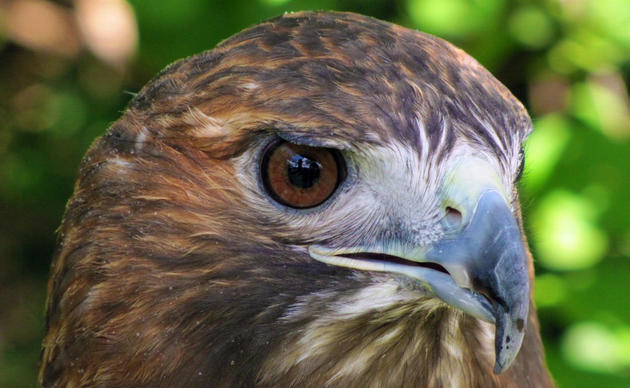How to Help Injured Wildlife
by Meredith Sampson, Wildlife Rehabilitator
Sources for help: In advance, find out who and where your nearest wildlife rehabilitators are, and keep their names and phone numbers handy. Then, when you find injured wildlife, you save precious time for yourself and the animal, and obtain help that much sooner. Click here for more information on how you can find a wildlife rehabilitator in Connecticut and New York. Some other sources for locating a rehabilitator include local police departments (don't use 911), animal control, dog wardens, vets, nature centers, your state department of environmental protection, or fish and game agency.
Keep in mind, wildlife is wild. Wild animals do not make good pets, due to their wild instincts, which become frustrated in captivity. Attempts to keep wild animals as pets are a form of cruelty. Most do not thrive, and suffer and die. Specialized training and knowledge, state and federal permits are required for persons caring for wildlife. Possession of wildlife without permits is illegal.
For your personal safety, do not attempt any rescue or handling of adult raccoons, fox, coyote, deer, water birds with long, pointy beaks, hawks, and owls.
What to Do If You Find Injured Wildlife
Mammals
Always wear protective gloves, or use towels or another barrier between your hands and the animal. Gently covering the mammal with a towel helps to calm the animal. If possible, use a broom or shovel to gently slide the mammal into an escape-proof container that has air holes.
Birds
A towel can be used to gently cover and catch the bird, keeping it calm. Place the bird in a container shoebox, or cardboard box with tops or flaps, or large paper grocery bag. Be sure to provide air holes in whatever container is used. If putting the bird in a bag, fold the top over and staple or use clothespins to keep it shut.
Birds & Mammals
Keep the contained mammal/bird in a warm, dark, and quiet place away from human activity and curious pets. Resist the temptation to handle or show off the animal. Such treatment is very stressful and can be fatal to the animal. It can also create a serious situation if the animal has a disease or parasite that is transmittable to humans, or the frightened animal suddenly tries to defend itself. Injured animals are usually in shock, and providing extra warmth can be life-saving. This can be done by using a heating pad set on low and placed halfway under the container, or with plastic bottles or jars filled with hot water and tightly capped, then placed inside the container with the animal. Do not feed any food or liquid. Doing so can kill the animal. Just keep the animal warm and quiet.
Contact a wildlife rehabilitator. If transporting the animal to a rehabilitator, keep the radio off, minimize conversation, and no smoking. Never put animals in the trunk of the car.
Preventing and Eliminating Hazards for Wildlife
Window strikes
During autumn bird migration, window strikes occur with alarming frequency and account for the deaths of millions of songbirds. Large glass surfaces such as windows and sliding doors reflect trees and sky. This often makes birds think there is no solid barrier and they can fly right through. The speed at which birds fly can cause serious injury upon impact, usually head trauma, broken wing, or neck. A few birds may be lucky, and just stunned and able to fly off after a few minutes or a couple of hours. If a bird has hit a window, is motionless on the ground, not able to fly up, rescue and contain the bird, and call a wildlife rehabilitator. Do not leave it outdoors as it is very vulnerable to attack by hawks and cats.
The next step would be to prevent window strikes, which can be done by hanging loose streamers, mylar ribbons, CD's, a decorative windsock, or banner in front of the window or door. To be effective, mylar ribbons or streamers should be at least 3/4-inch wide with one side that is silver or gold to reflect light intensely enough to keep birds away. Place bird feeders away from windows and glass doors.
Motor vehicles
Autumn brings increased wildlife activity, and unfortunately, some collisions are unavoidable when wildlife flies and hits your car or runs into the road in front of you. However, many collisions can be avoided by practicing some preventative driving.
Instead of keeping your eyes totally riveted to the road, include quick scans to the roadsides ahead. Be extra alert if there's a lot of vegetation along the road, or when driving on dark roads at night. Observe speed limits, giving you and animals a better chance at avoiding collisions. Animals that start to cross or are in the road, often become confused when cars approach. Slow down, stop, giving the animal an extra moment to get out of harm's way. That animal could be a mother, gathering food for her young.
If you see a deer or wild turkey at the side of the road, expect it to cross. Also, expect more than one, as deer and turkeys often travel in groups. At night, deer freeze when headlights shine on them. Slow down, stop, give them enough time to safely cross the road, then proceed slowly past that spot. When driving in an area frequented by gulls and a gull is in the road, slow down, stop, and allow the gull time to fly away. Gulls use roads to crack open shellfish, eating the contents on the spot. They are reluctant to abandon the food, slow to move out of the way, often getting hit by impatient drivers.
Cats & Dogs
Don't let cat and dog companions roam outdoors. Free-roaming cats are responsible for the deaths of millions and millions of songbirds and small mammals in North America annually. They are the second leading cause of serious declines in many songbird species. Unsupervised dogs do their share too. Cats do adapt to indoor life. Dogs, being social animals, love walking and playing with their human companions instead of being left alone outdoors. Your pets will also benefit by being healthier and safer by not getting hit by cars, not fighting with other animals, not risking serious disease, parasites, poisoning, or becoming a cruelty victim. Your wallet will also benefit greatly (lower vet bills).
Toxic Substances
Properly dispose of toxic wastes e.g. paint, used motor oil, and chemicals. Do not dump them into the ground, or down sink or storm drains. Check often for leaking motor vehicle fluids, which are fatal to wildlife and pets. Clean up what is on the ground and repair causes of leaks.
More ways to prevent and eliminate hazards to wildlife
Pick up litter, especially fishing line, 6-pack rings, kite string, plastic bags, balloons, and styrofoam. Recycle or dispose of properly. Avoid using pesticides and herbicides. There are safer alternatives.
Preventing Wildlife Problems in and around the Home
Autumn is a traditional time when homeowners perform home maintenance chores before winter's onset. Many of these tasks will also do double-duty in preventing wildlife problems in the home. What most people consider "wildlife problems" are actually human-caused. These problems occur when certain conditions are unknowingly created. Wildlife, being very opportunistic and resourceful, occasionally take advantage of such situations.
For those times when "nuisance" animal problems do occur, there are humane, usually low-cost and often, very simple remedies. Many wildlife rehabilitators are knowledgeable of humane solutions. Cruel and lethal tactics are not necessary to resolve wildlife problems nor do they address the cause of the problem, which is what attracts wildlife in the first place. Ideally, a few ounces of prevention are worth much more than pounds of cure!
The following checklist of preventative measures highlights the most common problem areas in houses, which can become potential entry points for wildlife. When properly implemented, the house and most other buildings can be made "animal-proof." As an added bonus, no wildlife is harmed in the process.
- Have chimney caps professionally installed, making sure they are well attached. They keep out raccoons, squirrels, birds of all sizes, and leaves, and do allow normal chimney function.
- Check for soft, rotted wood in areas behind gutters and downspouts. Repair any damage. Clean gutters and downspouts. Install gutter screens to prevent debris buildup which can prevent proper drainage and cause water overflow. This, in turn, keeps wood damp which eventually softens and rots. Woodpeckers and squirrels can make holes in such areas, with squirrels gaining access into attics or walls and nesting.
- Use 1/4-inch hardware cloth to screen attic and fan vents, vent pipes, and clothes dryer vents (be sure to clean out lint often). There are commercial exterior dryer vent covers available, that automatically open when the dryer is in use, and remain closed the rest of the time.
- Make sure your roof is in good condition and cut back tree branches and limbs that hang near or over the roof (popular routes for wildlife getting into attics and chimneys).
- Check for gaps larger than 1/4-inch around door and window frames. Caulk if needed. (Bats can enter through 1/2-inch spaces). Also keeps out cold air.
- Any food stored in the garage should be kept in secure, animal-proof containers. Be sure not to feed pets outdoors or leave any food outdoors, which can attract wildlife.
- Keep garage and basement doors closed, especially at night, to keep out uninvited wildlife guests.
- Cover basement window wells, so skunks don't fall in (they can't climb out).
- Keep dumpsters closed, especially at night to prevent animals getting in, and unable to climb out. Secure garbage cans with heavy-duty elastic cords, or use cans with screw-on lids.
- Put away sports nets when not in use to prevent birds and other animals from getting entangled, injured, or even killed.
- Avoid using pesticides, herbicides, poisons, glue traps, and "repellents." They are very harmful to wildlife, pets, and humans. Go organic and use safer and humane alternatives for "pest control."
- Late fall and winter are good times for doing tree work, when wildlife nesting activities are at their lowest. Be sure to check tree cavities for any roosting owls or squirrels before starting the work.
Peaceful coexistence with wildlife is possible and necessary. Wildlife has an essential place in this world, with a variety of functions that affect all of our lives. For example, 80 percent of our food crops are pollinated by some form of wildlife, i.e. birds, bats, and insects. Did you know that insect-eating bats can consume at least 600 mosquitoes per night? Some birds can consume 1,200 or more! The human species cannot survive without wildlife.
Much of the harm done to wildlife is the result of conflicts with human activity both accidental and intentional. Loss of habitat has forced more wildlife into closer proximity to our homes, neighborhoods, towns, and cities. There are measures we can take to prevent and minimize negatively impacting wildlife and its habitats that we all share.
Other ways to help wildlife include helping efforts to protect wildlife and to restore and preserve habitats; planting native species of wildflowers, grasses, trees, and shrubs; and educating yourself and others in the abundant and very necessary wonders of the natural world.
We can't live without wildlife, and wildlife needs us now!
How you can help, right now
Learn & Explore
Where birds thrive, people prosper. Help us transform local communities into places where birds flourish. Learn what you can do to nurture wildlife, nature, and conservation in Connecticut.
Support Our Work
Through land stewardship, science, education, and advocacy, we work to preserve habitat and protect bird species that are of state, national, and global concern. Your gift can make a difference.
Join Our Family
When you become a member of Greenwich Audubon Center, you are nurturing bird-friendly communities and a natural heritage for generations to come. Help us do great things.




